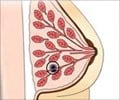In Canada, only few patients undergo breast reconstruction after mastectomy, despite its safety as a procedure and the positive psychological benefits, shows a review article.

In general, older age, ethnicity, socioeconomic status and geography affect the use of breast reconstruction. Women older than 50 years are less likely to undergo reconstruction. This may be secondary to concerns of increased complications or comorbidities, although a US study found that the negative relationship between advanced age and decreased breast reconstruction remained significant after controlling for patient comorbidities. Women of lower socioeconomic status were less likely to have reconstruction. Women living in large urban centres were more likely to undergo breast reconstruction. For example, there were 10 reconstructions per 100 mastectomies in the Toronto area compared with 4.3 per 100 mastectomies in the rest of Ontario in 1994/1995. Other modifiable barriers to breast reconstruction in Canada include knowledge gaps and misperceptions held by referring physicians.
The stage of breast cancer is the most predictive clinical factor associated with reconstruction, because patients with advanced stage disease are significantly less likely to undergo reconstructive surgery than those with early stage disease.
"Although higher stage disease is not a contraindication for breast reconstruction, women or their physicians, or both, may not perceive this restorative procedure as a high priority compared with treatment," writes Dr. Toni Zhong, Department of Surgery and Surgical Oncology, University Health Network, University of Toronto, with coauthors.
"The optimal rate of breast reconstruction is not currently known for any jurisdiction, and the absence of such a benchmark limits useful research in this area," write the authors. "However, given the broad array of factors that influence the rate of breast reconstruction and the low rate of breast reconstruction in Canada compared with other jurisdictions, it is unlikely that our current practice has achieved an optimal rate."
The authors suggest that having a better understanding of the current rates of breast reconstruction and the different factors that influence access to breast reconstruction in Canada is key to addressing our current knowledge gap.
Advertisement














